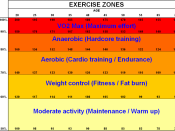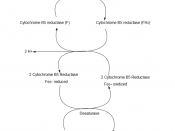Type II muscle fibers oxidize lactate at a very fast rates. When muscle contraction produces a significant amount of lactate, it is then released into the central circulation of the blood, and within seconds it is made available to that muscle for energy. Therefore, 75% of the lactate produced from high intensity exercise is made available for energy production in type II muscle fibers. The remaining 25% of lactic acid is used for energy in the heart, the make up of liver glycogen, and the supply of energy to inactive muscles. A good example of this would be a runner who is exceeding his or her planned race pace in a 10k. The excess lactic acid accumulated in the contracting muscle from insufficient oxygen is then made available to inactive muscles (e.g., the arms) from the central circulation of blood.
The remaining lactic acid that is not directly oxidized for fuels is sent to the liver, where it is stored as glycogen.
In the process of exercise, glycogen is released into the blood stream to form glucose.
Lactate is Good
As coach and athlete you must learn how to teach the body to handle lactic acid. It is imperative, if you want successes in today's highly competitive field of athletics to train your muscles, body and mind to accomplish gains in performance even in the presence of lactic acid. Coaches and athletes should design training programs with this being a primary focus. This is done by two basic components of training.
Long Slow Distance (LSD) training beyond the normal racing distance, will develop tissue enzyme adaptations that will rely upon the use of free fatty acids for energy production, which will result in less lactic acid being produced. LSD training will also increase the rate of lactic acid removal from...


